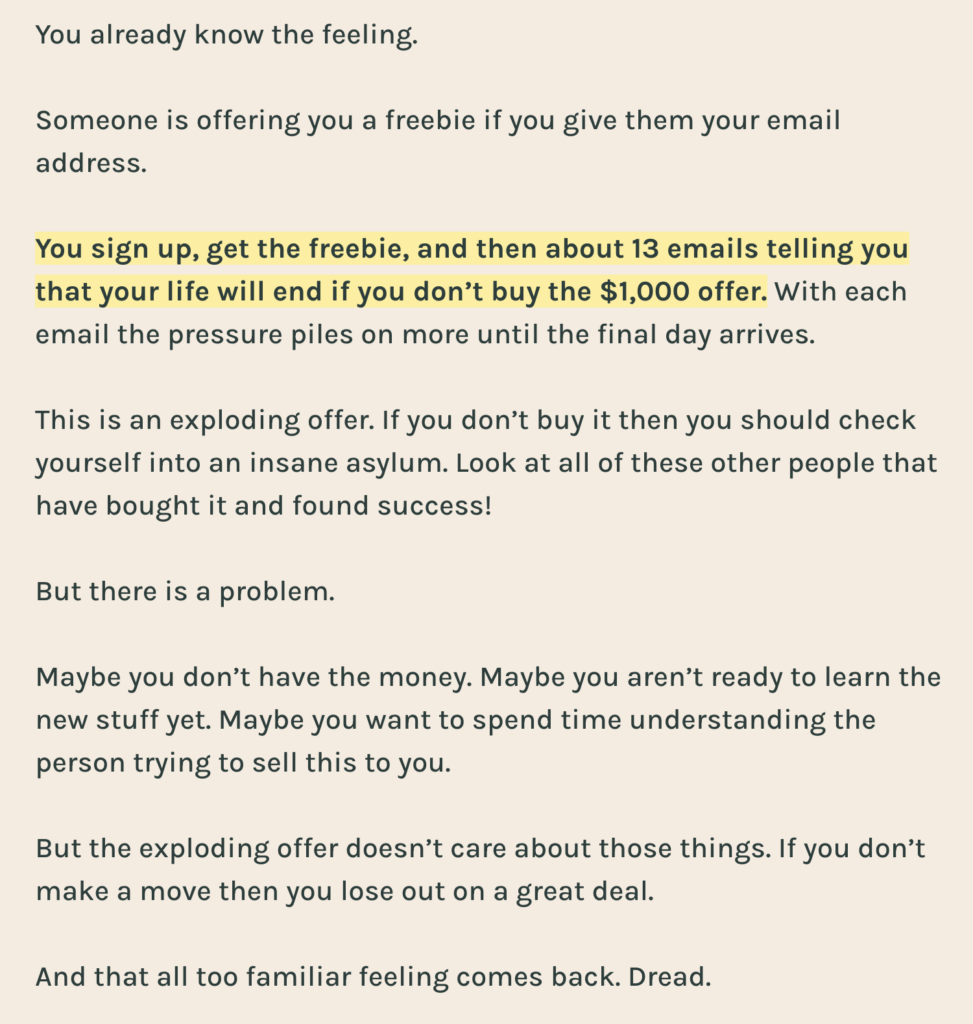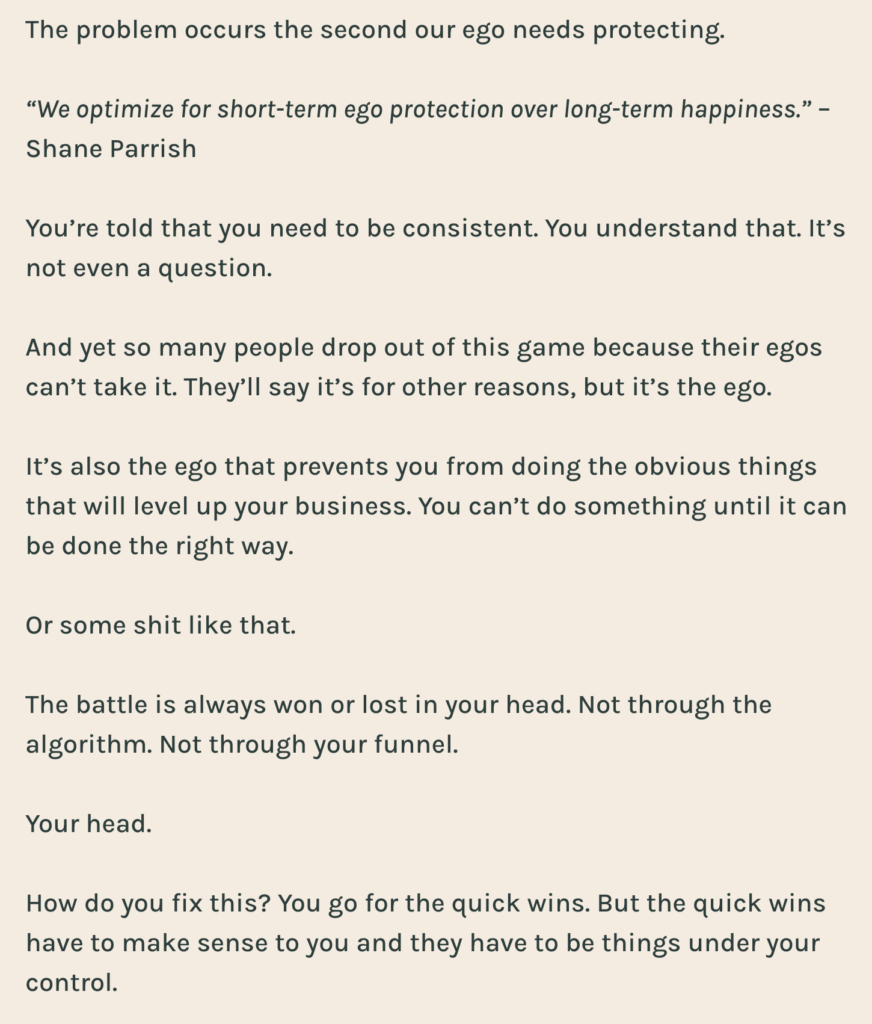Over the years I’ve written over 1000 emails and 50+ sales pages. It’s hard not to get good at things when you put in that many reps.
But over time, I’ve found that not everyone writes emails or sales pages like I do. Wild, I know.
I’m used to receiving emails from my audience asking how I got into their heads and I used to always chuckle. When I hired my first employee she used to always ask how I was able to write the kinds of emails that I did and I never had an answer for her.
I was never formally trained in writing. I wasn’t particularly good in English class. I just wrote.
And yet, I was able to write content that had an impact.
To be honest, I figured it was just something that you were either good at or bad at because I never followed a certain structure. One email might be 300 words while another would be 1000.
There was so much variance between what I would write, but the results were always the same. But I knew I had to figure out why my stuff was effective while others fell flat.
So I spent time studying my emails to see if there was a pattern. I looked at the emails that performed well to those that were mediocre and finally, I found the common thread.
Get Them to Feel, Get Them to Move
Think about the last time you saw a movie so good you recommended it to your friends. Why did you recommend it?
It wasn’t because of the plot. It wasn’t because of the performance.
It was because of what those things did to you. They made you feel.
The emails that were performing the best for me were the ones that evoked a strong emotion in the reader.
And the reason is pretty simple. We are animals. As much as we want to pretend everything we do is based on logic, that simply isn’t true.
Everything starts with a feeling. What we think or feel starts with a chemical reaction so if you can trigger a certain chemical reaction in people you can control how they feel and therefore how they will respond.
This is both powerful and scary.
When it comes to decisions our emotions guide us and then we follow that emotion with logic. This is why it can seem so hard to get a sale because we want to believe that logic plays a major role in our decisions.
So what do we do?
Tell them how awesome our offer is and everything that is included in it. But this only works when we are able to elicit an emotion from our customers. If they feel good about things then seeing a features list will only make them feel better.
If they feel bad about things then what they will do is search for reasons as to why they feel that way.
- “Oh, no money-back guarantee.”
- “I don’t see why it costs that much.”
- “I don’t trust them because I don’t like the design of this page.”
If you can elicit some type of emotion then you have a better chance of making the sale. The emails where I would get a response asking how I got into their heads always targeted some emotion.
Whenever you write copy whether on your site or in an email ask yourself if you want to evoke some type of emotion through your words.

That’s some copy from a version of the Feel Good Funnels intro. The point of this copy was to bring up the anxiety someone feels when they’re hit with the false scarcity and urgency of a traditional funnel.
By doing this, I build a connection with the Customer letting them know I understand that feeling. The one they are feeling right at this moment. This puts us on the same level.
The page continues to drive home the idea that nobody wants to feel that way so why do we make people feel that way? Can’t you build a business without making people feel like shit?
Paint a Picture
The best way to elicit emotions through your writing is by painting a picture for your customer allowing them to step into it.

This is from a Newsletter that I sent out talking about how the way to succeed in business is by winning the battle against yourself.
In these two paragraphs, I’m trying to evoke the feeling that one gets when they see others succeeding and don’t understand why it’s not working for them. That frustration of seeing that the successful person isn’t doing anything crazy and yet they are winning.
That build-up of frustration is then followed by the solution.

Having the solution presented to them helps to relieve the frustration that was built up. That negative emotion gets flipped into a positive one and that has an impact.
Throughout your content, you can go for a number of different emotions on a single page. This means you need to be conscious of whether or not your messaging is having an impact.
If it’s meant to be informational that’s fine. Information doesn’t need emotion but it’s not bad if it has it.
Everything else should be playing into some emotion that your customer has.
In the next couple of lessons, we will go over a system that you can use to help you pull out some of these emotions so you know which ones to hit.
The Circle of Emotions
I don’t consciously think of the specific emotion that I want to evoke in my writing. I feel it myself and then I put words to paper.
However, I know it can be helpful to see the possible emotions that you can try to mimic so this wheel of emotions can prove to be helpful.

Next Lesson: The Opportunities >>>>>